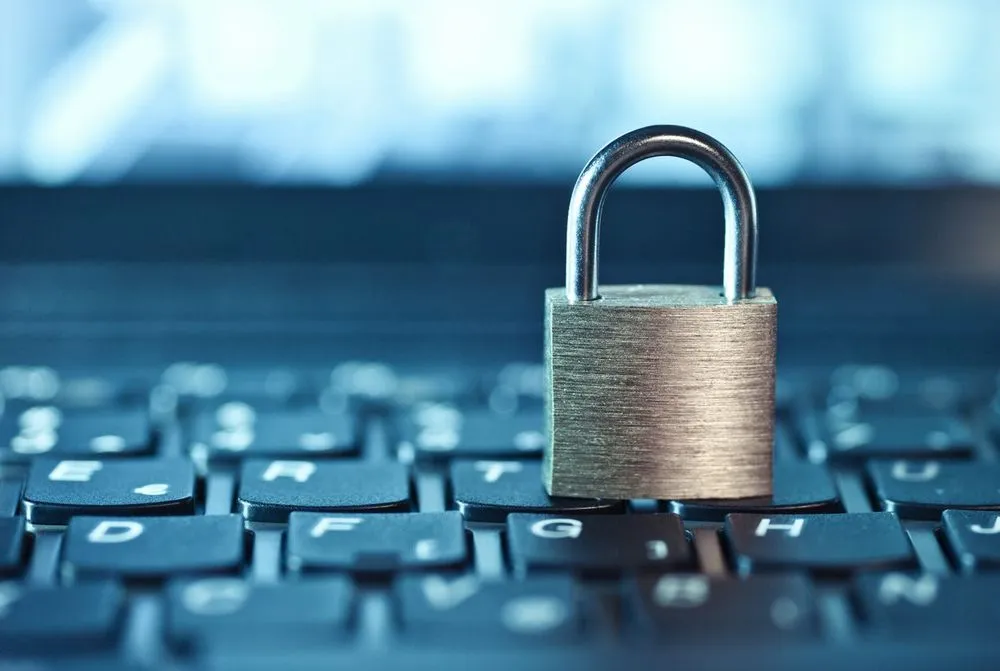8 Steps to Protecting Your Data While Running a Business
For organizations of any size data issues can range from problematic to downright devastating Lost or stolen data has the potential to sink your op...

For organizations of any size, data issues can range from problematic to downright devastating. Lost or stolen data has the potential to sink your operations, sometimes leading to situations in which recovery is difficult or even impossible. Protecting your data is vital to running a successful business.
These scenarios can occur in a variety of ways. A data breach, for instance, costs the average business more than $6 million. By 2021, the damage from cyber attacks is expected to surpass $6 trillion globally. And we haven’t even talked about the potential of data loss due to uncontrollable scenarios such as natural disasters.
In other words, the importance of data security should be obvious. In fact, it is vital to keep your business alive and growing. But just how do you go about accomplishing that feat?
In answering that question, too many businesses concede defeat. They hope for the best, but fail to prepare for the worst. Fortunately, it doesn’t have to be that way. With just a few important steps, you can increase the cybersecurity surrounding your operations and better protect your data. This is how you can get started.
1. Establish a Security Culture
It might seem counterintuitive at first, but any effort to protect your business data has to begin with a culture shift. Even as you recognize the importance of digital security, that recognition matters little if those actually handling the information don’t feel the same way.
The weakest link in your data security effort is almost always your frontline employees. According to an ACC Cybersecurity Report, the clear majority of data breaches occur through employee mistakes. Often, that’s through no fault of their own. But if they don’t recognize just how important they are in this effort, they have little opportunity to change and improve their efforts.
The first step to change: build a better security culture. That includes establishing policies and standards but also rewarding your top performers in this area to instill a sense of importance for the concept. The more fun and engaging you can make cybersecurity, the better off your business will be.
2. Host Regular Employee Training Sessions
Of course, a basic awareness of the importance of security is hardly ever enough. Without the right culture, many of the below steps will not be effective. And yet, that culture also needs to be backed up with real, actionable steps designed to improve your security on a day-to-day basis.
Your first step in that regard still focuses on your employees. Establish regular training sessions that help your employees improve their knowledge and abilities in the security field. Topics can range from keeping passwords secure to detecting phishing emails and other scams. After training, use Microsoft’s Phishing Attack Simulator to see the effectiveness of your training.
The key to success here is making sure that the training is engaging and affirming rather than obviously correcting. Focus on building on existing capabilities to gradually improve the way in which everyone within your small business handles cybersecurity. KnowBe4, for instance, can help you build your security awareness training. Meanwhile, tools like Brainstorm can help you optimize your change without disrupting your existing processes.
3. Back Up Your Data on a Regular Basis
While your employees form the backbone of any sustainable data security strategy, you cannot stop there. Naturally, you also have to make sure that your data is protected even in the event of something unexpected.
Take hurricanes as an example. You can do nothing about this natural disaster, only prepare for it. And yet, 40 percent of small and medium-sized businesses never recover from such a devastating event. At least part of the reason: their data is lost forever. Despite all of the dangers for businesses on an everyday basis, 62 percent of businesses fail to regularly backup their data.
That’s especially frustrating considering the increasing ease of a solution. With the right software platform, data backups can be automated to make sure your business is safe. When these backups occur in the cloud, or when you store your sensitive information in a secure cloud location, to begin with, you increase your chances of making it through a major disaster in relatively good shape even further.
You may not think about it, but your backup and recovery strategy should also extend to your cloud services. Office 365 may live online, but that doesn’t mean you don’t have to worry about backing up your email data. Our backup recovery services can ensure your data will be taken care of.
4. Put Basic Cybersecurity Measures in Place
Data backups protect against unexpected disasters, but they don’t matter much if your business falls victim to a cyber attack. Even if you don’t believe that your enterprise data is valuable enough for a breach, the statistics quoted in the intro suggest that even a seemingly innocent piece of information can make you vulnerable to potential hackers and data theft.
The question, then, is not whether your business is vulnerable, but what you can do about it. Especially for startups with little experience in this space, a comprehensive cybersecurity strategy can be daunting. Fortunately, even a few simple steps can go a long way toward protecting your data on any budget. The U.S. Small Business Administration shares a list of its top 10 tips for cybersecurity, including:
- Protect against viruses, spyware, and other malicious code.
- Secure your networks.
- Establish security practices and policies to protect sensitive information.
- Educate employees about cyber threats and hold them accountable.
- Require employees to use strong passwords and to change them often.
- Employ best practices on payment cards.
- Make backup copies of important business data and information.
- Control physical access to computers and network components.
- Create a mobile device action plan.
- Protect all pages on your public-facing websites, not just the checkout and sign-up pages.
You will notice that at least some of these tips track directly with the tips we already shared above. That’s because, at its best, cybersecurity is not an isolated strategy. It’s a way of running your business, involving your employees, and protecting your data from all types of threats.
Agile IT focuses its work on the NIST Cybersecurity framework, developed by the U.S. Department of Commerce to prioritize data security in a flexible, cost-effective way. We feel strongly that this framework benefits any business and is worth an evaluation by your team for viability.
5. Shift Your Mindset to Proactive
Don’t wait for something bad to happen to take action. When your enterprise suffers data theft or loss, recovery chances dwindle. Instead, shift your mindset to proactively prevent any threats from even impacting your business, to begin with.
Being proactive means not just taking the above steps, but also making sure that you have contingencies in place for scenarios before they occur. When disaster strikes, do you know where your data is backed up, and how to recover it? When an employee leaves, how can you make sure they don’t take sensitive information with them? How can you secure your hardware and software (and even securely dispose of them) to make a breach that much more difficult?
This proactive approach can be as simple as requiring multiple means of identification. Azure’s Multi-Factor Authentication, for instance, helps you secure access to any sensitive information without disrupting regular workflow.
All of these are questions you should be asking yourself not when the problem occurs, but long before it even enters the horizon. With this type of proactive approach, you can drastically reduce the damage that any type of data theft or loss has on your business. Tools like Azure Advanced Protection and Advanced Threat Analytics can get you started.
6. Prepare for BYOD Policies
As we move deeper into the digital age, it’s becoming increasingly common for employees to use their own devices to conduct at least some business. If you cannot offer each member of your team their own computer and smartphone, they will probably use their own. In isolation, that is not a problem, and can actually save you resources. But if you’re not careful, it could pose a security threat if you’re not proactively protecting your data.
In fact, one survey found that 56 percent of employees either frequently or very frequently store sensitive information from their employer on their smartphone. As you can imagine, these devices tend to be soft targets for data breaches. In fact, many of the tips recommended by the SBA are impossible to implement when your employees use mobile devices.
The key to success, then, is mitigating the potential risks. This article by Security Magazine offers a few great suggestions on curbing the threat, which includes an understanding of the exact devices used and a capability of isolating business from personal data.
Microsoft’s Enterprise Mobility and Security (EM+S) platform is especially relevant here. It helps to keep your laptops and mobile devices protected, while also expanding its cloud services to on-premise deployments. For instance, it includes Mobile Device and Mobile Application Management, to optimize your IT needs in this area. In partnership with Agile IT, you can both plan and deploy these services for your needs. Our ongoing support and incident response for EMS will be especially beneficial.
7. Build a Quick Response Mechanism
Despite all of the above suggestions, something could go wrong. Even the most well thought-out data protection plan for your enterprise is vulnerable to some holes you have never even considered. And again, a proactive approach can help you prepare for the worst, should it happen.
In fact, only 16 percent of companies have an active response plan in place should their data be compromised. And often, the first step you need to take is the most important one. When your proactive measures fail, look to have a contingency in place.
Agility is key to success. Know whether you have to shut down your network, recover your data, or take other steps. If you work with an external partner (more on that below), ensure that they will be available to help you even on short notice.
8. Find a Reliable Partner
Finally, especially for businesses with limited IT resources, it makes sense to find an effective external partner that can help to protect your data. Most, if not all, of the above cost little to no tangible resources, but they do require expertise in order to be successful.
Hiring an internal, dedicated cybersecurity and data specialist is not always effective. But you can find that necessary help externally. To make sure that happens, though, your partner has to be reliable and proven to succeed in working with businesses like yours.
We can be that partner for you. Too often, businesses of all sizes fail because they fail to protect their sensitive data. And yet, the solutions can be simpler than most think. Agile IT can help you migrate your data to the cloud, build regular backups, and establish vital cybersecurity steps and policies.
Our EMS services can help you optimize your mobility and security efforts even as your business grows over time. Meanwhile, reliable backup and recovery processes will ensure that no data is lost even in the face of potential disaster. Contact us to learn about our services, protecting your data, and to start the conversation about a potential IT management partnership.





